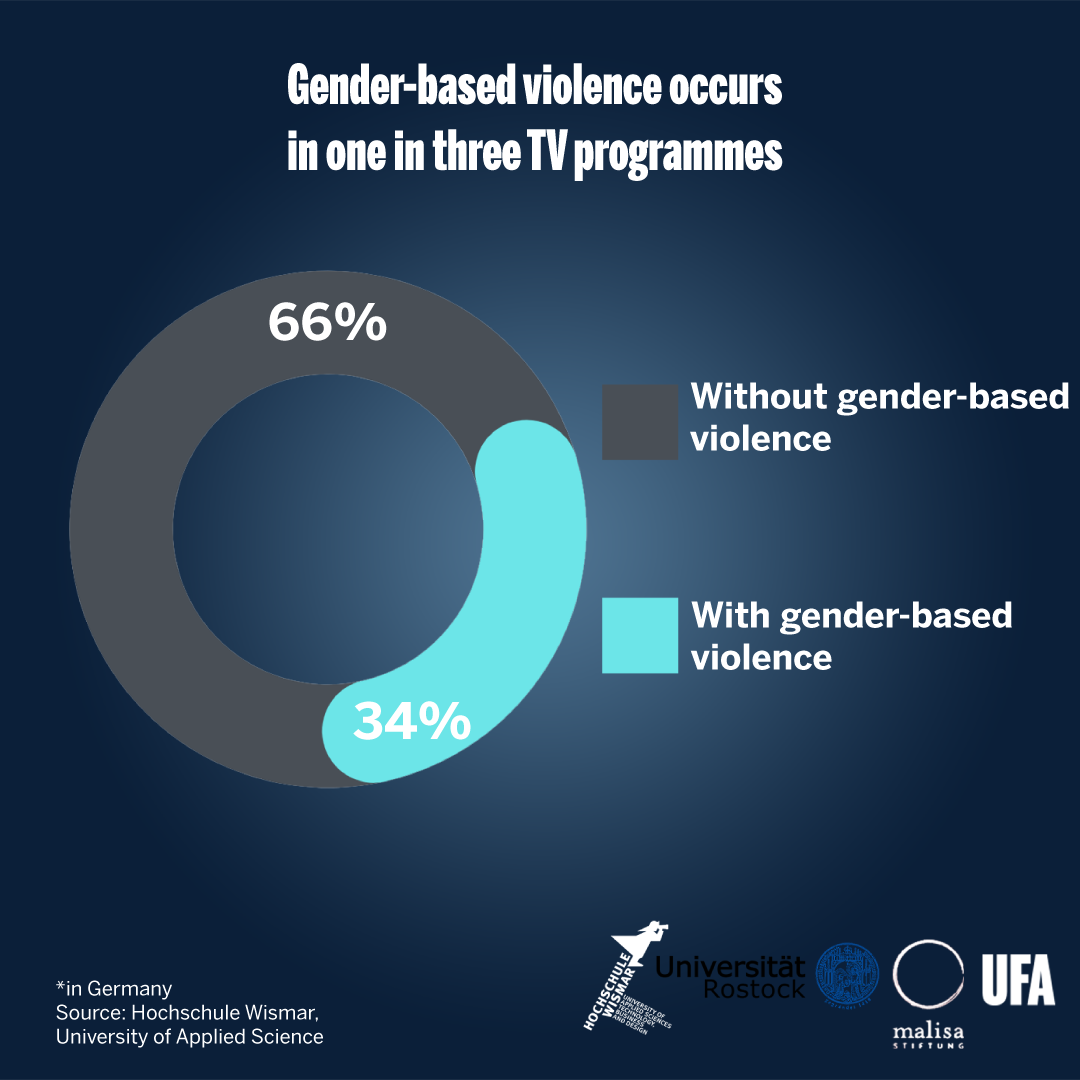„WHEN WE OFFER A DISTORTED VIEW OF VIOLENCE AGAINST WOMEN, WE ARE PART OF THE PROBLEM“

How do audiovisual media portray gender-based violence? In the run-up to the “International Day for the Elimination of Violence against Women”, the MaLisa Foundation and UFA GmbH are drawing attention to this important but previously under-examined question. A media content analysis funded by them provides an overview of the portrayal of gender-based violence on German TV for the first time.
Regarding gender-based violence, there is also an urgent need for action in Germany: One in three women has experienced physical and/or sexualised violence at least once in her life. An important question in this context is the role of media representation of the subject. So far, there has been little research on this topic in Germany.
Against this background, the MaLisa Foundation and UFA GmbH initiated the study, “Gender-based violence on German television. A Media Content Analysis”, which was published today. For the first time, the study provides an overview of the representation of gender-based violence on German TV. The study was conducted by Prof. Dr. Christine Linke and Ruth Kasdorf M.A. and is a collaboration between the University of Applied Sciences Wismar and the University of Rostock. A representative sample of programmes from eight TV stations (Das Erste, ZDF, RTL, RTL2, Vox, ProSieben, SAT1 and Kabel Eins) broadcasted between 6 and 10 p.m. in 2020 was analysed.
Main results:
- Gender-based violence occurs in about one third (34 %) of the programmes. This is often explicit and severe violence against women and children.
- It is portrayed in different types of programmes and genres, but most often in fictional programmes (66 %). Within these, it mostly occurs in crime series (26 %) and feature films (13 %).
- The voices of victims/survivors of gender-based violence are featured extensively in only 8 percent of the cases.
- When gender-based violence is shown on German TV, there is often a lack of
- content warnings,
- references to support services for those affected,
- a description of the social framework conditions and
- a stronger inclusion of the perspective of those affected.
Lead researcher of the study, Prof. Dr. Christine Linke commented: “Gender-based violence is often visible on German television, but the perspective of those affected is rarely the focus. It is particularly sobering that possibilities of prevention and support services for survivors are hardly communicated. The study clearly shows that there is a need for action. We have to discuss gender-based violence on German television.”
Maria Furtwängler, co-founder of the MaLisa Foundation: “Media shape our perception of reality. As media professionals, we have a special responsibility, especially when it comes to an urgent societal issue such as violence against women. If we present it in a distorted way, we tend to become part of the problem, whereas we can and should be part of the solution. The results of the study give us a lot of impulses for our future actions. I would like to thank our partners, the initiators of #sicherheim, UFA and Natalia Wörner, as well as Anika Decker and Soroptimist International Germany for their important support for this initiative”.
Joachim Kosack, Managing Director of UFA GmbH: “As a media production company, we are shaken by the results of the study ‘Gender-based violence in German television’. Especially because the narrative form of the crime thriller also takes up a lot of space for us. But it’s not only in crime stories that we pay too little attention to the subject. In our story development, we reflect far too little on the fact that stereotyped narrative patterns are repeated over and over again or are not placed in a context that classifies these patterns dramaturgically. We will deal with this more intensively in internal workshops in order to do justice to our responsibility as media professionals. Therefore, many thanks to the MaLisa Foundation and all those who initiated, supported and conducted this study.”
A detailed summary of the results is available here. The results of the Wismar University of Applied Sciences are available for download here.